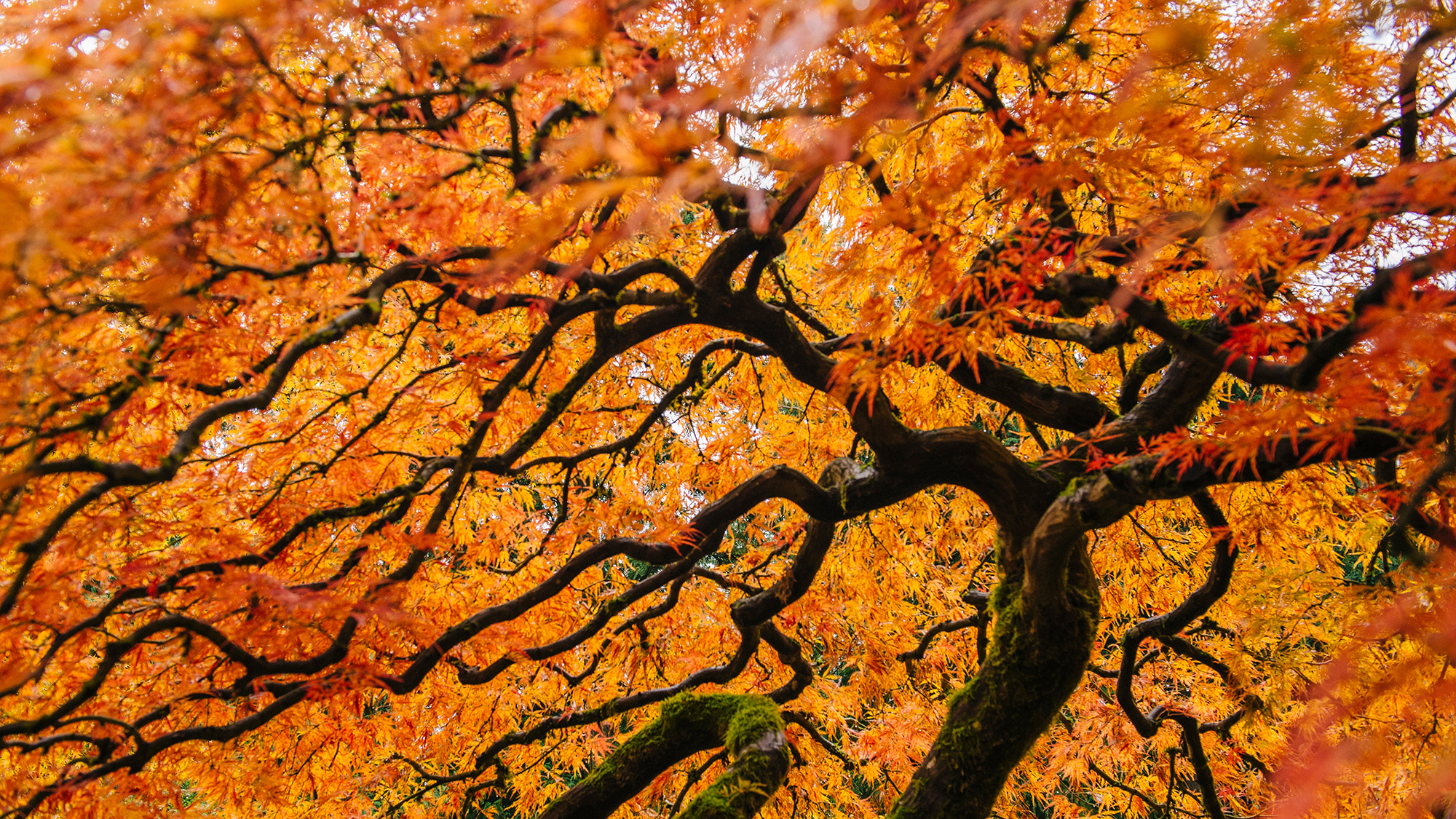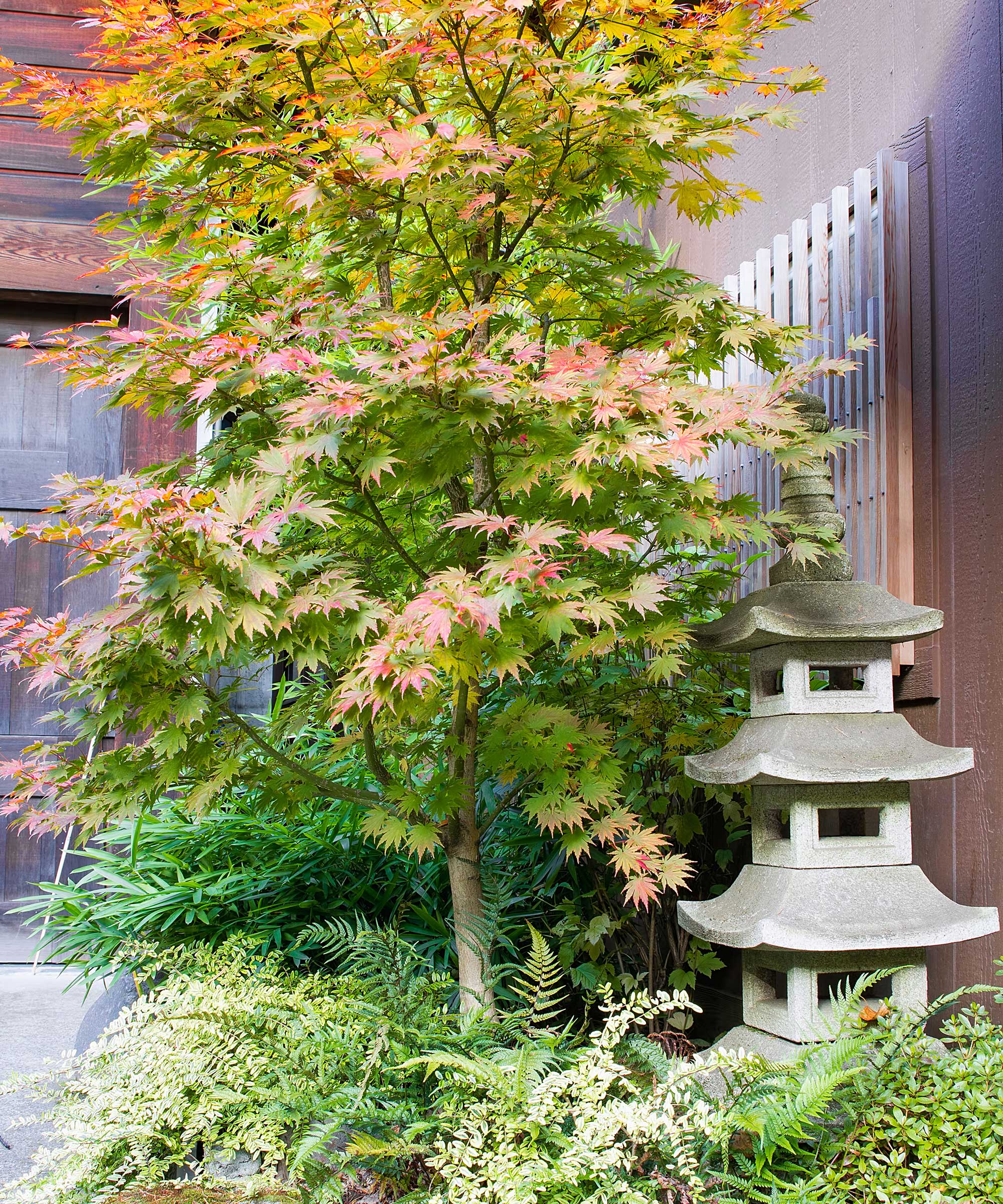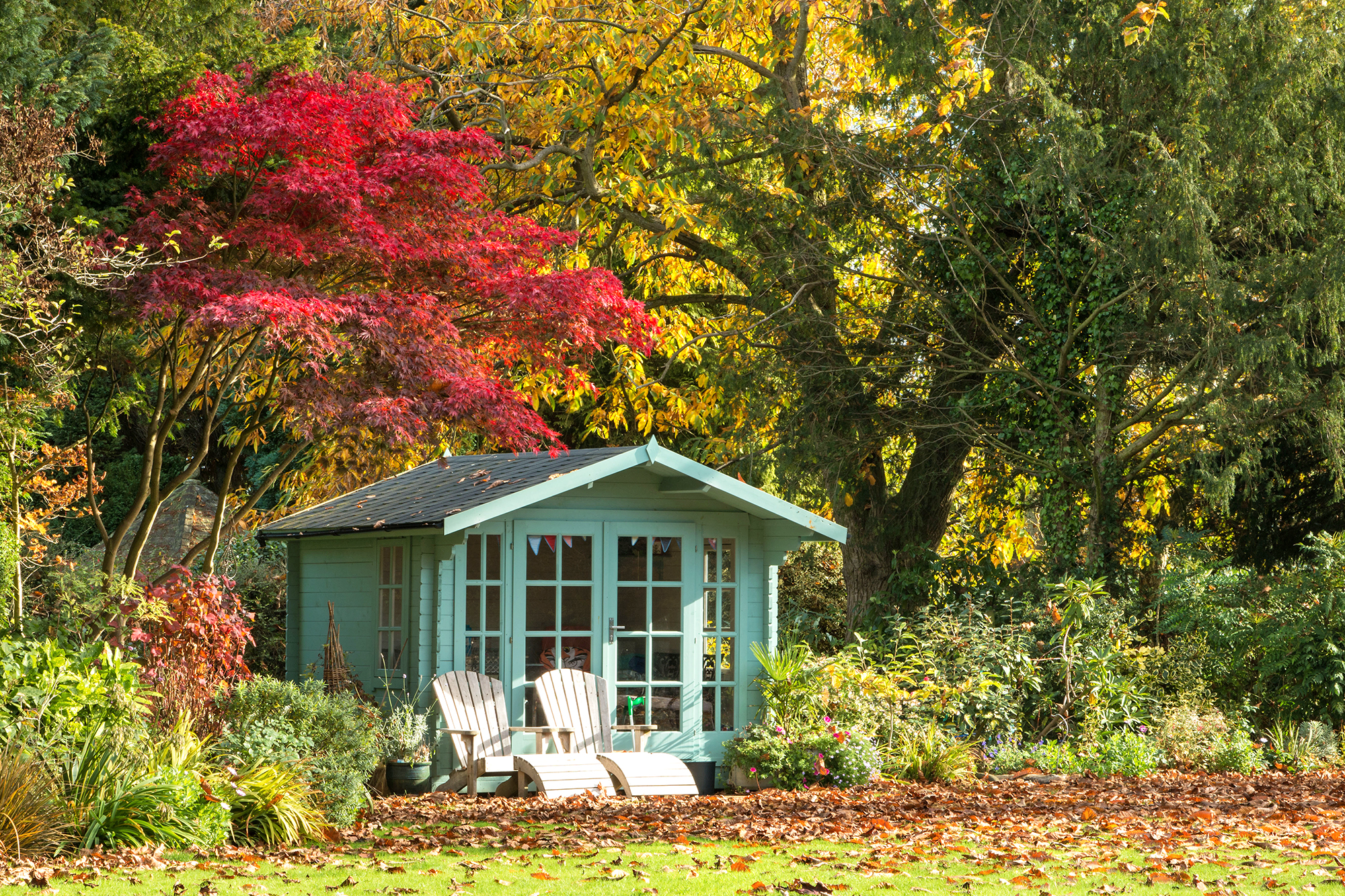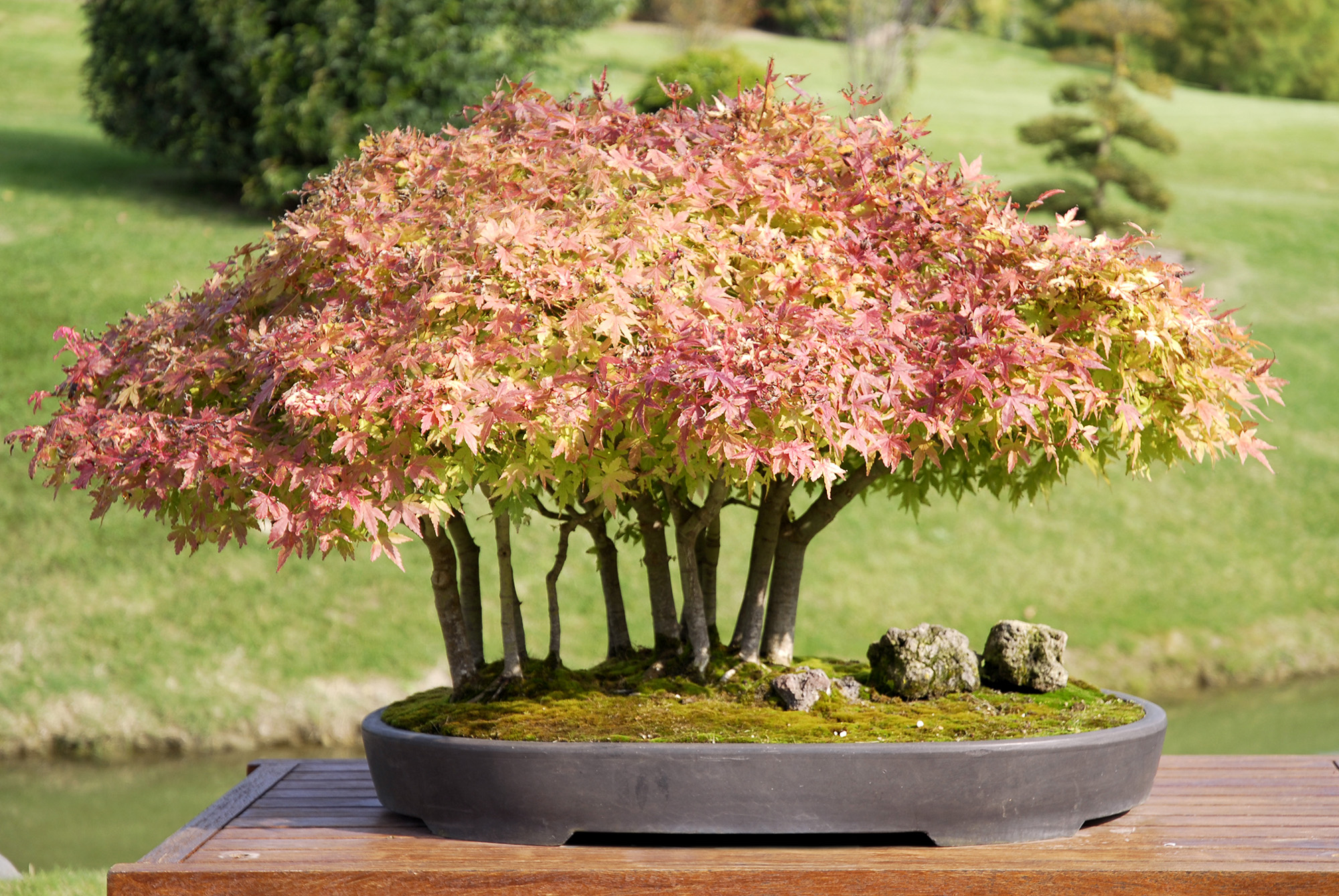When and how to prune Japanese maple trees – for a glorious display
Pruning acers can help keep them in good health and looking their best year round


Knowing when and how to prune Japanese maple trees is an important aspect of caring for these colorful garden stunners. But unlike some backyard trees, they tend to look better when their natural shape is embraced, and an annual prune isn't always necessary. However, now and again they can benefit from a tidy-up. And when the time comes, it's important to go about it in the right way.
‘It’s important not to over-prune Japanese maples, so take time throughout the year to observe your tree and get to know it,’ says Pete Smith, an arborist and urban forestry program manager at Arbor Day Foundation.
'Think of your specimen as a living sculpture you are creating in your garden,' he suggests. 'It should be pleasing to the eye throughout the year, and that begins with proper pruning.'

These beautiful trees are perfect for a Japanese-inspired backyard scheme, but complement lots of other outdoor themes, too
When to prune Japanese maple trees
Japanese maples are one of the best trees for fall color. They drop their foliage afterward, and remain bare until new growth appears the following spring. ‘The best time to prune Japanese maple trees is during late winter, before bud break,’ says Pete Smith. ‘At this time of year, it’s easier to view the architecture of the tree; the way the branches are aligned and complement each other.’
However, if you have missed this window, don't worry – they can be pruned at other times of the year, too.
‘I like to prune my Japanese maples at the end of summer to early fall,' says Stuart Mackenzie, a horticulturist, arborist and expert at Trees.com. 'I can crown-clean out any undesirable growth; weak attachments are easier to spot. The canopy can also be opened up for better air circulation.
‘At this time of year, the tree will have recovered from any winter damage, and disease will be easily identifiable. There will also be less bleeding (sap running) now versus the springtime.’
Heavy pruning in the high summer heat can be problematic, so should be avoided. 'Summers are typically stressful for Japanese maples thanks to hot temperatures and long periods of drought,' says Bloomscape's gardening expert Lindsay Pangborn. 'Removing branches in summer also exposes leaves and bark that were previously shaded from the harsh rays of the sun and can cause scorch and leaf drop.
'If you must prune in summer, aim to remove no more than one-quarter of the foliage and wait for a period of cooler temperatures and regular rainfall.'

Japanese maples are well-loved for their fall color
How often to prune Japanese maple trees
'For regular landscape purposes, once to twice per year is a typical frequency for pruning Japanese maples. If you keep up on pruning, you shouldn’t need to remove much each year,' says Lindsay Pangborn.
'It’s fine to prune once every few years instead, as this gives new branches more time to develop and may make it easier for the gardener to decide which branches to remove.'
If you perform a hard prune on your variety of Japanese maple, it’s best to wait until the following year before pruning again, to allow the tree time to recover.
'For speciality uses, like bonsai, it’s normal to prune much more frequently,' she adds.
If you've spotted a broken branch, this should be removed promptly for safety reasons.

Japanese maples are a popular choice for bonsai
Expert tips on how to prune Japanese maple trees
Before you start pruning your Japanese maple, you'll need to ensure you have the right tools. 'Pruning should always be done with sharp and properly-sized tools,' says Lindsay Pangborn. 'Pruners are good for branches smaller than the diameter of your finger, but for larger branches, it’s best to use a pruning saw.' There are plenty available on Amazon, such as this Corona folding one.
Whether grown as a tree for a small garden, or as a large specimen, Japanese maples are known for their picturesque form. 'When pruning, step back frequently to look at the “big picture” and be sure you’re happy with the overall shape you’re creating,' continues Lindsay.
‘Start by focusing on the branches that conflict with walkways or ones that compete with the central leader,’ says Pete Smith. Cut back dead or diseased branches, too, as well as ‘suckers’ (shoots that grow from the base of the tree), recommends Lindsey Hyland, the founder of Urban Organic Yield.
'When pruning main branches, always use the three-cut rule to avoid unnecessary damage,' says Lindsay Pangborn. 'First, undercut the branch close to where the final cut will be. Second, working on the outside of your undercut, cut through the branch to remove the bulk of the weight. You’ll be left with a stub, which should be removed in the third step. Take care not to cut into the branch collar.'
Stuart Mackenzie agrees: ‘If you cut too close or into the branch collar, recovery is slow or not at all. This can lead to heartwood decay and disease.’
Sign up to the Homes & Gardens newsletter
Design expertise in your inbox – from inspiring decorating ideas and beautiful celebrity homes to practical gardening advice and shopping round-ups.

Melanie has worked in homes and gardens media for two decades. Having previously served as Editor on Period Living magazine, and worked on Homes & Gardens, Gardening Etc, Real Homes, and Homebuilding & Renovating, she is now focusing on her passion for gardening as a Senior Editor at Gardening Know How. As a keen home grower, Melanie has experimented with pretty much every type of vegetable at some point – with mixed results. Often it is the simplest things that elude you, which may explain why she just can't seem to master zucchinis.
-
 The rumours are true, the NYC trend for fringes and trimmings is actually happening – they are the secret weapon for making a room look expensive
The rumours are true, the NYC trend for fringes and trimmings is actually happening – they are the secret weapon for making a room look expensiveA trim or a ruffle is the finishing touch that can take a scheme from ordinary to the extraordinary in an instant
By Jennifer Ebert Published
-
 How to grow impatiens – garden experts reveal the secrets to growing this shade-tolerant, sparkling summer plant
How to grow impatiens – garden experts reveal the secrets to growing this shade-tolerant, sparkling summer plantBoth 'Busy Lizzie' and 'New Guinea' impatiens can thrive in shady yards
By Ellen Wells Published